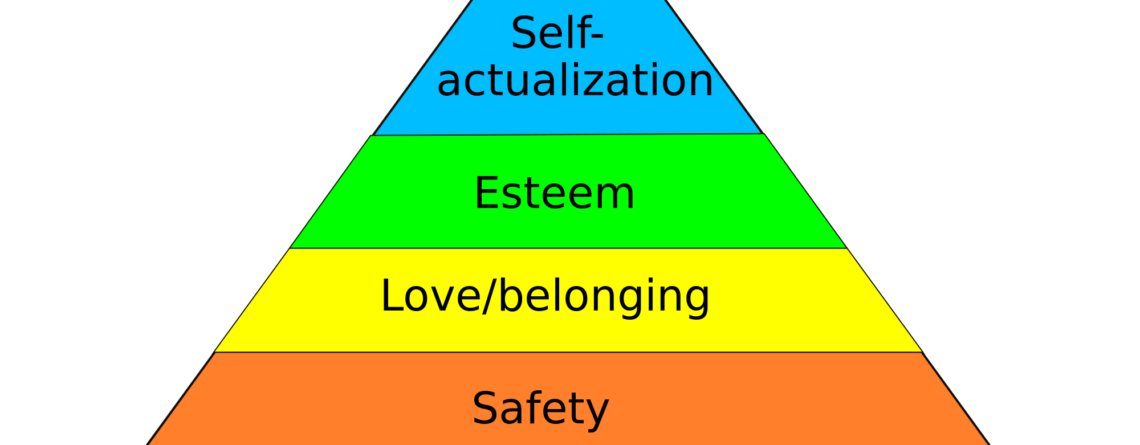At this point in the evolution of IT, there is very little benefit for anyone in telling companies what they should be doing. While people might disagree on the details, there is a pretty clear hierarchy of needs in IT, akin to to Maslow’s hierarchy of needs for humans.
A Theory of IT Motivation – Maslow’s Pyramid in the Cloud
The idea behind the hierarchy is that fundamental needs must be fulfilled first, and only then can attention move to the next layer of the pyramid. For humans, the most fundamental need is physiological, the basic requirements for survival. In IT, this the basic keep the lights on level: is the infrastructure up and running?
The next level is safety needs. For humans, this means both physical and economic security, as well as health and general well-being. This maps pretty cleanly to IT, with a focus on performance and security monitoring.
After that we get to love and belonging, or the need for interpersonal relationships. This might seem irrelevant to IT, but there is definitely a need for relationships, integration and orchestration between IT components.
The next level, esteem, is easier. Many “civilian” users have a poor opinion of IT, but a good relationship between IT and the business is key to delivering many of the benefits of modern IT. This means self-service, rapid, and automated delivery of IT services.
Once all of this is in place, it’s time to think about where to go next: self-actualization. This level is about the realization of potential. Most organizations have significant latent IT potential, but they are unable to unlock it unless they have completed the previous steps. However, once IT services are running reliably, monitored, integrated, automated, and responsive, all sorts of possibilities open up. These days, business runs at the speed of IT; if the lower levels of the pyramid are not solidly built, IT will be a bottleneck, but once the peak of the pyramid has been reached, IT enables the business to run faster than had ever been possible.
When it’s all laid out like that, it seems pretty obvious – so why don’t all companies do this?
A New Approach to IT Management
The problem is that the pyramid is steep, and companies keep sliding back down the sides. The pace with which new technology is introduced means that you can never be done with a layer. Rather, you will have a good handle on physical infrastructure, and then you have to extend your process to virtualization. No sooner have you done that, than you have to deal with containers and microservices.
Every time, you have to start again at the bottom of the pyramid: how do we roll this thing out? Okay, now it’s running, how do we monitor it to make sure it keeps running? Right, now we have to figure out how to tie it into everything else, and then we can open it up to users.
The result of this iterative process is often a maturity mismatch across the organization. Older technologies may have more established processes – or they may be a mish-mash of hacks, workarounds and one-time exceptions. Newer technologies may take advantage of the clean playing field to do The Right Thing – or they may try to run before they can walk, and end up in a mess.
How can IT master this process, and reach self-actualization?
The key is to gather information about the state of the entire pyramid. Instead of treating each level as completely distinct and separate from others, operations teams need to put together information from different levels into a single coherent picture. The same goes within individual levels, of course, where differences between technologies can further fracture the picture.
Taking a holistic view of the whole pyramid at once is how IT organizations can develop and grow as a key enabling component of company’s’ success. The pyramid is why IT absolutely does matter as a strategic differentiator for companies.
While everybody is trying to scale the same pyramid, the way they go about it will determine their relative success. The pace of a business is ultimately constrained by the pace of the systems that support it, so all else being equal, an increase in the responsiveness of IT is an increase in the agility of the business.
Getting to this point requires a radically new approach to IT, and a new set of technologies to match. This is no longer an environment where Five-Year Plans can be mapped out in advance and then executed predictably. The new IT must flow with the changes, reacting to changing requirements and conditions. There is no time to provision physical servers with fistfuls of discs, or to push a baker’s dozen of monitoring agents and laboriously correlate their outputs. Sure, graybeards who have been around the beginning can take one look at a scrolling screen and spot a problem – but they’re not always around, and anyway shouldn’t be spending their valuable time watching screens in the first place.
The value of IT moves up the pyramid too, abstracting the lower levels and trusting to automated processes to do their part. The self-realization of IT professionals is no longer in being in the loop of every single activity, hands on the keyboard, staring at many screens. Instead, it lies in taking that strategic view, working on what needs to happen next, and everything that is required to get there.
This is what enables the ultimate dimension of Maslow’s model: self-transcendence. This is what happens when IT is so transparent to users that it disappears entirely. We only perceive what blocks or distorts a signal, or adds friction to a process. IT that transcends these limitations simply disappears, from the point of view of its users.






